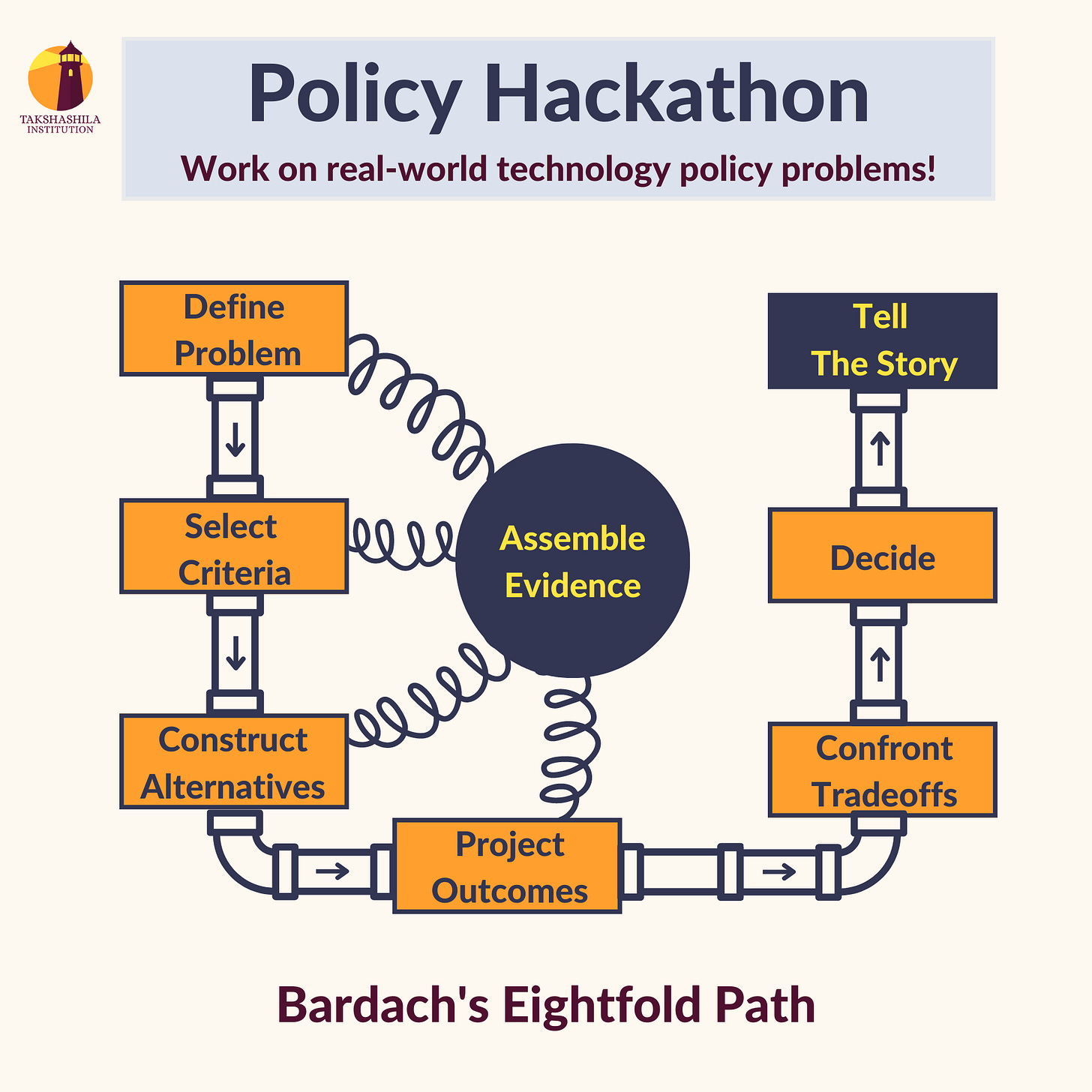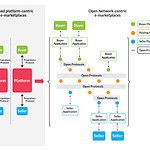Cyberpolitik: The Internet of Yesterday and Tomorrow
— Bharath Reddy
The foundation of the internet was built on three pillars:
Reliance on the private sector,
Light regulatory oversight,
Free speech and a free flow of information.
The hope was that these values would also be accepted as the internet would be accepted across the world. However this utopian vision is far from the reality of today’s internet. Gradually the internet has become less secure, more fragmented and less free. Authoritarian regimes across the world have been able to leverage control of the internet to shape narratives that strengthen their control. The US needs to recalibrate and adapt to this new reality. So begins the Council on Foreign Relations report titled “Confronting Reality in Cyberspace: Foreign Policy for a Fragmented Internet”.
The authors propose a three-fold approach to confronting the new reality in cyberspace. Firstly, they recommend that allies need to come together to preserve a trusted and secure internet based on international standards. This includes working towards a shared policy on digital privacy, tackling cybercrime, and helping developing nations build cyber capacity. Secondly, there should be discussions and negotiations with adversaries to avoid cyber operations against nuclear command, control and communications systems, election systems and financial systems. This includes holding states accountable for cyber threats originating from their territory. The last recommendation involves getting the domestic house in order, which includes building cyber security talent, minimising domestic cyber security risks and prioritising digital interests in national security strategies.
The predictions of the end of the global internet are growing quite common. The predictions for a fragmented internet range from a splinternet to a bifurcation between a Western and a Chinese internet. With these possibilities appearing more likely each day, India needs to rethink its own approaches to cyber security.
Matsyanyaaya #1: Fission Factor: The Big Bet on Small Reactors
— Aditya Ramanathan
While the world’s attention is drawn to the Zaporizhzhia nuclear power plant, where Russian and Ukrainian forces are facing off, there are potentially more significant developments underway for the future of nuclear power.
In July, the United States’ Nuclear Regulatory Commission (NRC) announced that it would certify the NuScale 50 MWe small modular reactor. NuScale’s reactor is only the seventh design which the NRC has ever approved in the history of nuclear power. It is also the first small modular reactor (SMR) that has received the green light in the United States.
China is presently ahead of the US in SMRs. A couple of weeks before the NRC announcement, the China National Nuclear Corporation (CNNC) began the construction of an SMR demonstration plant in Hainan Province. CNNC calls the project the first “commercial onshore small modular reactor” in the world. Once the 125 MWe reactor is up and running, CNNC claims it will be capable of powering 526,000 households.
The SMR Promise
The International Atomic Energy Agency (IAEA) defines SMRs as reactors with up to 300 MWe capacity. As the name indicates, SMRs are much smaller than traditional reactors and modular in their design. For instance, the NuScale design is touted as being only
“about 1 per cent the size of a traditional power plant’s containment chamber, though it delivers 10 percent of a plant’s power output.” SMRs are modular for two reasons. Firstly, assemblies and components can be pre-fabricated on a factory floor and then put together on site. Secondly, additional units to t can simply be added on site to increase capacity.
Proponents of SMRs have advocated their widespread adoption for several reasons. For one, SMRs need much lower initial investments and fewer operators and specialists to run them. Two, unlike traditionally large nuclear plants, finding the right patch of real estate for an SMR is much simpler. Three, proponents say SMRs are well suited to serve small communities and provide a reliable base-load for renewables. Four, the modularity of SMRs allows them to be easily scaled up as the needs of a community grow.
SMR proponents argue that these reactors are safer because they are far less susceptible to human error and rely on passive safety features. For instance, NuScale designs don’t require external power sources to operate the cooling systems for their cores. Finally, if an accident occurs, the consequences with an SMR are likely to be much less severe than in previous nuclear accidents.
While both the CNNC and NuScale reactors feature novel designs, they nevertheless draw from proven technologies. CNNC describes its Linglong-1 design as being a pressurised water reactor, while the NuScale design is a light water reactor. Both reactors appear to use clever design and engineering to simplify traditional reactors.
This is a sensible approach to getting SMRs approved and operational. However, other companies are experimenting with more radical designs. The Ultra Safe Nuclear Corporation (USNC) has designed what it calls a Micro Modular Reactor (MMR). The MMR eschews water altogether, using helium as a coolant and transferring heat through molten salt. MMRs also use a ‘Fully Ceramic Microencapsulated’ (FCM) fuel, in which small kernels of Uranium fuel, each about 1 mm across, are encased in layers of ceramic and silicon carbide. According to USNC, this makes the fuel much safer to use and transport, gives it greater temperature stability, and makes it impossible to repurpose for military purposes. In April, the company started running a pilot plant for the production of FCM fuel. USNC expects demonstration units of the reactor itself to be operational by 2026.
Besides these there are several other SMRs under development, including so-called micro-reactors from start-ups like Oklo and NuGen as well as designs from established giants like General Atomics. Finally, there are companies pursuing larger reactors like the so-called pebble-bed design as well as the Bill Gates-backed TerraPower’s molten salt design.
Nuclear Realities
For all the promises of SMRs, it’s worth keeping in mind that they are still a long way off. Even if SMRs are all they claim to be, it may be another two decades before they dramatically impact the global energy mix. Until then, renewables and traditional nuclear plants will remain important sources of low-carbon energy.
There also remain many uncertainties around SMRs, many of which feature completely unproven designs. As with every other means of power generation, there are also likely to be some downsides. For example, a Stanford-led study concluded that SMRs could produce much more nuclear waste than traditional reactors. The study looked at designs from NuScale, Terrestrial Energy, and Toshiba and concluded that these small reactors would experience greater neutron leakage, which would, in turn, create more radioactive material. While such studies are by no means conclusive, they highlight how little we will really know until prototype SMRs run for years.
SMRs are also likely to be subject to the same political and social uncertainties that afflict traditional nuclear power. The supply of Uranium fuel remains highly politicised and dominated by the Nuclear Suppliers Group (NSG). And popular perceptions of nuclear power appear to be poor. Nuclear engineers may point out that the chances of a major radiation event at the Zaporizhzhia plant are very low, despite the ongoing fighting in its vicinity. However, popular perceptions are unlikely to make much allowance for expert opinion.
Matsyanyaaya #2: How can the US-India iCET Succeed?
— Arjun Gargeyas
I know we talk about the intersection of technology and international affairs in this newsletter. This time I’m trying something different, elucidating the possibility of a new technology in India which can become the global standard and shake things up in the international E-commerce arena if implemented perfectly.
Over the last few weeks, we met with Mr Sanjay Jain, a member of iSPIRIT and an engineer closely working on developing the India Stack applications. This was to understand better the newly launched Open Network for Digital Commerce (ONDC) and how it functions. The ONDC was launched by the Department for Promotion of Industry and Internal Trade, Government of India as an e-commerce aggregator. The primary objective was to challenge the monopoly of E-commerce giants like Amazon and Flipkart while providing the local sellers a platform to be equally competitive.
After having a couple of conversations with Mr Jain, who brilliantly explained the system’s backend, India had a sense of opportunity to set a global standard through which E-commerce operates.
What is it?
ONDC is a massive network that acts as a facilitator for buyers and sellers. It is not a platform such as Amazon. It is built on leveraging the network effects and positive externalities of E-commerce platforms, while aggregating all existing platforms to be on the same network. It is currently developed on the Beckn Protocol, an open-source software protocol. Now, for comparison's sake, it is similar to the National Payments Corporation of India (NPCI), which handles all UPI transactions.
Why has it been introduced?
One of the main reasons for introducing ONDC in India is the movement toward E-commerce while making it inclusive and accessible to the country’s large population. There is also the movement from platform-based to network-based technology in the E-commerce domain so that users are not locked into a particular platform only and can choose from multiple options. Including local merchants, sellers and buyers to make the network have over 15,000 retailers is another key objective of the platform itself. Increasing the share of Indians using E-Commerce (from 9 crores to 25 crores) and improving geographic coverage of E-Commerce (covering 75% of PIN codes) remains the core idea behind ONDC.
How can it become the E-commerce domain standard?
ONDC mainly revolves around two principles: Bundling and Interoperability. It helps separate the buyers and sellers while aggregating both on a single network. It addresses lock-in and unbundles E-commerce’s buying, selling and logistics aspects. Sellers need not register on an existing app but can come together with others to create seller apps with other retailers (location-specific retailer aggregation or delivery-specific services can have their platforms for end users to choose from). There’s no centralised payment processor, but seller-side apps determine the commission for whoever decides to get onboarded.
Can India use ONDC and implement it in different countries just like its digital payments system? ONDC can soon be a perfect solution for preventing monopolies in the E-commerce domain. It can also provide local entrepreneurs with a perfect opportunity to reach the end users directly without being bullied by big firms who prefer to prop their own businesses.
The US has long been talking about breaking up Big Tech. Now, in the E-commerce space, ONDC has a shot (albeit a very long one currently) to become a credible alternative to the existing model (concentrated with a few giants who have captured the market) that other nation-states can use. With that, ONDC has the possibility of improving India’s own international reach (like UPI), thus helping the country gain some diplomatic heft in the E-commerce space.
Our Reading Menu
[Book] From Space to Sea : My ISRO Journey and Beyond by Abraham E. Muthunayagam.
[Report] Green energy depends on critical minerals. Who controls the supply chains? by Luc Leruth, Adnan Mazarei, Pierre Régibeau and Luc Renneboog.
[Article] Technology and the construction of oceanic space: Bathymetry and the Arctic continental shelf dispute by Daniel Lambach










